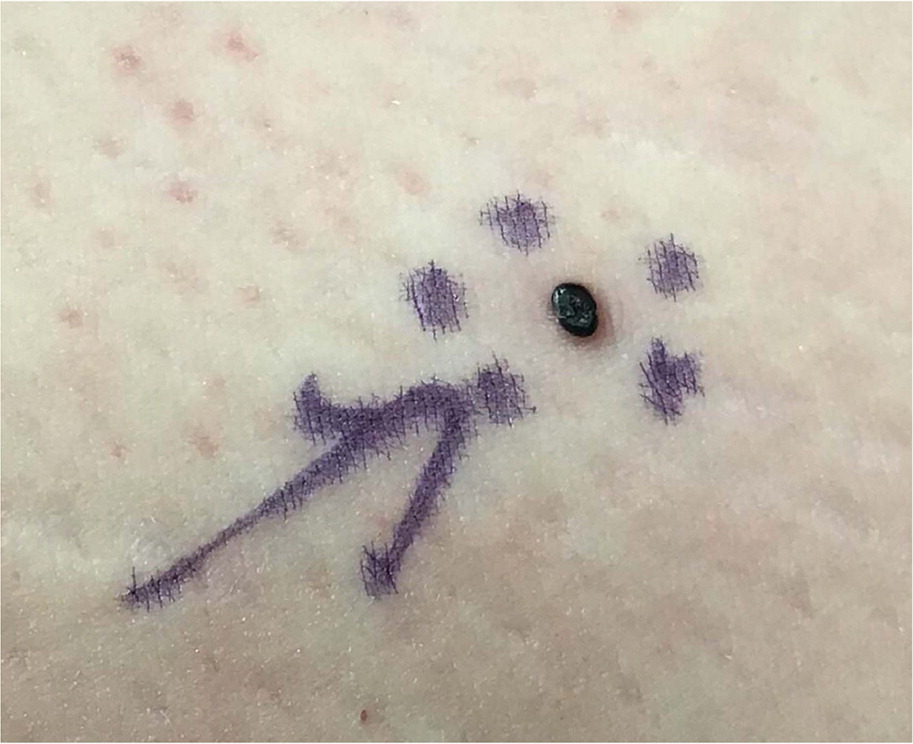
Am Fam Physician. 2024;110(1):83-84
Author disclosure: No relevant financial relationships.
A 40-year-old woman presented with a painful lesion on her thigh. It had formed 3 months earlier as a red spot and gradually darkened. She had no other lesions.
The examination revealed a black papule on her inner thigh with a diameter of 2 mm (Figure 1). Dermoscopic examination showed dark purple lacunes. No other similar lesions were found during the full-body skin examination, including the oral cavity and tongue. An urgent excision of the lesion was performed.

QUESTION
Based on the patient's history and physical examination, which one of the following is the most likely diagnosis?
A. Pyogenic granuloma.
B. Solitary angiokeratoma.
C. Superficial spreading malignant melanoma.
D. Verrucous hemangioma.
DISCUSSION
The answer is B: solitary angiokeratoma. This rare benign vascular lesion can occur anywhere on the body but is most common on the lower extremities. Men are most likely to develop these lesions, and prevalence increases with age. The incidence of solitary angiokeratoma is difficult to determine because the lesions are often asymptomatic.1 Multiple angiokeratomas involving the scrotum or vulva are called angiokeratomas of Fordyce. Multiple acral verrucous angiokeratomas in children are known as angiokeratomas of Mibelli. Angiokeratoma circumscriptum presents at birth as a cluster of angiokeratomas involving the lower extremities.2
Subscribe
From $165- Immediate, unlimited access to all AFP content
- More than 130 CME credits/year
- AAFP app access
- Print delivery available
Issue Access
$59.95- Immediate, unlimited access to this issue's content
- CME credits
- AAFP app access
- Print delivery available

